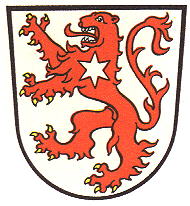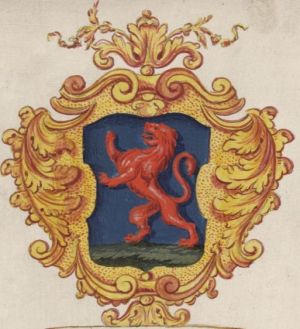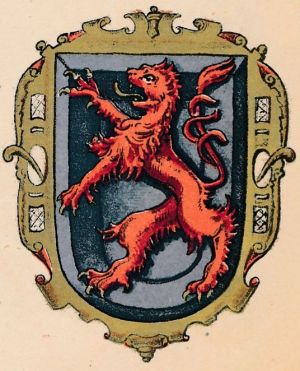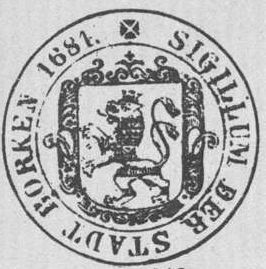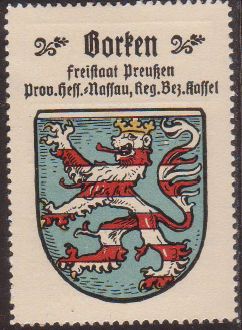Borken (Hessen): Difference between revisions
Knorrepoes (talk | contribs) m (Text replacement - "{{de}}" to "") |
Knorrepoes (talk | contribs) m (Text replacement - "|'''English''' ↵| {{blazon wanted}}" to "|'''English''' | blazon wanted") Tags: Mobile edit Mobile web edit |
||
| Line 17: | Line 17: | ||
|- | |- | ||
|'''English''' | |'''English''' | ||
| | | blazon wanted | ||
|} | |} | ||
Revision as of 07:15, 7 April 2023
BORKEN
State : Hessen
District (Kreis) : Schwalm-Eder Kreis (until 1973 Fritzlar-Homberg)
Additions : 1972-4 Arnsbach, Dillich, Freudenthal, Gombeth, Großenenglis, Haarhausen, Kerstenhausen, Kleinenglis, Lendorf, Nassenerfurth, Pfaffenhausen, Singlis, Stolzenbach, Trockenerfurth
| German |
Im silbernen Schild ein goldbewehrter roter Löwe, auf der Schulter belegt mit einem sechsstrahligen silbernen Stern. |
| English | blazon wanted |
Origin/meaning
The oldest known seal of the city, dating from the late 14th century, already shows a lion. In later seals it is clear that the lion is the striped lion of Hessen. In the late 19th and middle of the 20th century the lion was still shown as the lion of Hessen, as can be seen from the image below.
| The arms in a manuscript from +/- 1730 |
The arms in an 1884 book |
| The municipal stamp shown in 1892 |
The arms by Hupp in the Kaffee Hag albums +/- 1925 |
The city, on the other hand, used itself often a red or blue lion as arms, without the bars of Hessen.
This red lion was granted in 1951 as the city arms to which a star was added as symbol of the Counts of Ziegenhain. The town was a possession of these counts in the early middle ages.
The addition of many municipalities in the 1970s did not change the arms.
Literature: Stadler, 1964-1971, 8 volumes; Kaffee Hag albums
